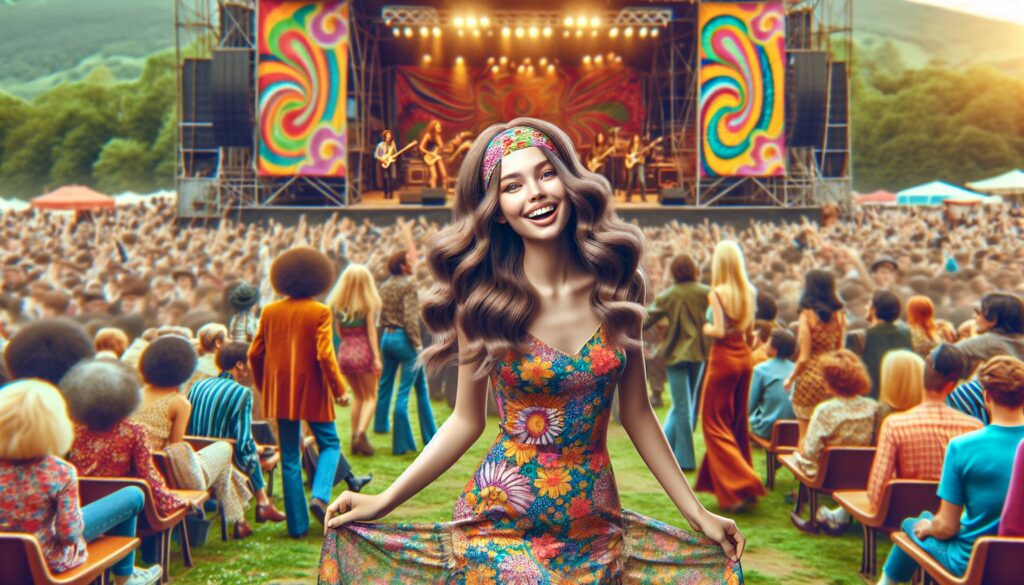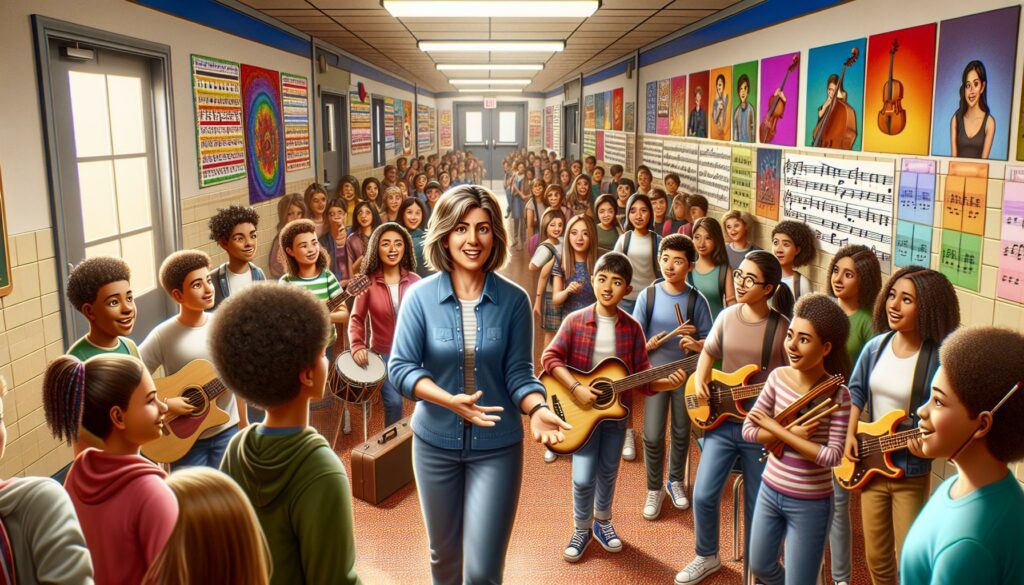As a lifelong music enthusiast, I’ve always been fascinated by the revolutionary sounds of the 1960s. This transformative decade wasn’t just about peace signs and tie-dye shirts – it was an era that completely redefined popular music and gave birth to countless genres we still love today. I’ve spent years studying how the British Invasion, led by The Beatles and The Rolling Stones, ignited a musical revolution that swept across America. The decade saw an unprecedented explosion of creativity, from the rise of psychedelic rock and Motown soul to the emergence of folk music as a powerful voice for social change. It’s incredible how these diverse musical styles emerged simultaneously, each telling its own unique story of this remarkable period in history. What kind of music was popular in the 1960s?
- The 1960s witnessed a revolutionary transformation in music, led by the British Invasion with bands like The Beatles and The Rolling Stones dominating the charts
- Folk music became a powerful voice for social change, with artists like Bob Dylan creating protest anthems that addressed civil rights and social issues
- Motown Records and soul music flourished during this decade, with groups like The Supremes achieving multiple #1 hits and establishing a distinctive sound
- Psychedelic rock emerged in the mid-1960s, reaching its peak during the 1967 Summer of Love, with innovative albums from artists like The Beatles and Jimi Hendrix
- Traditional genres like jazz and pop continued to evolve, with artists such as Miles Davis and John Coltrane introducing new experimental techniques and styles
What Kind of Music was Popular in the 1960s
Rock and roll transformed the musical landscape of the 1960s through revolutionary sound innovations, electric guitar prominence and youth-driven cultural shifts. The genre’s evolution accelerated in 1960-1964 with distinct British and American influences shaping its direction.
The British Invasion
British rock bands dominated the American music scene starting in 1964, led by The Beatles’ groundbreaking appearance on The Ed Sullivan Show. Liverpool bands introduced a raw energy that combined American rock elements with distinctive British pop sensibilities. Key British Invasion bands included:
- The Beatles with 6 #1 hits in 1964 alone (“”I Want to Hold Your Hand,”” “”She Loves You””)
- The Dave Clark Five reaching #1 with “”Glad All Over”” in January 1964
- The Animals topping charts with “”House of the Rising Sun”” in summer 1964
- The Rolling Stones breaking through with “”(I Can’t Get No) Satisfaction”” in 1965
- California Sound: The Beach Boys pioneered complex harmonies with “”I Get Around”” and “”Fun Fun Fun””
- Detroit Rock: Bob Seger started with local hit “”East Side Story”” in 1966
- Memphis Sound: Elvis Presley continued chart success with “”It’s Now or Never”” and “”Are You Lonesome Tonight””
- New York Scene: Dion achieved solo success with “”Runaround Sue”” and “”The Wanderer””
| Rock Chart Performance 1960-1964 | Number of Hits |
|---|---|
| American Artists #1 Singles | 27 |
| British Artists #1 Singles | 19 |
| Rock Songs in Billboard Top 100 | 178 |
| Guitar-Based Hit Records | 156 |
Folk Music and Social Movements
Folk music emerged as a powerful voice for social change in the 1960s, intertwining traditional American folk sounds with contemporary protest messages. The genre gained prominence through coffee houses, college campuses, and protest rallies across the United States.
Bob Dylan’s Influence
Bob Dylan transformed folk music from 1961 to 1965 through politically charged lyrics and poetic storytelling. His songs “”Blowin’ in the Wind”” (1962) and “”The Times They Are A-Changin'”” (1964) became anthems for civil rights demonstrators. Dylan’s impact extended beyond folk music when he introduced electric instruments at the 1965 Newport Folk Festival, inspiring artists like The Byrds to create folk-rock fusion.
Key Dylan Songs and Their Impact:
- “”Masters of War”” (1963) – Anti-war protest
- “”A Hard Rain’s A-Gonna Fall”” (1963) – Nuclear arms race critique
- “”Mr. Tambourine Man”” (1965) – Poetic innovation
- “”Like a Rolling Stone”” (1965) – Folk-rock breakthrough
The Folk Revival Movement
The Folk Revival Movement centered in Greenwich Village, New York, spawned influential artists who shaped 1960s protest culture. Here’s a breakdown of key contributors:
Notable Folk Artists and Their Signature Songs:
| Artist | Notable Song | Release Year | Peak Chart Position |
|---|---|---|---|
| Peter, Paul & Mary | “”If I Had a Hammer”” | 1962 | #10 |
| Joan Baez | “”We Shall Overcome”” | 1963 | – |
| The Kingston Trio | “”Where Have All the Flowers Gone”” | 1962 | #21 |
| Phil Ochs | “”I Ain’t Marching Anymore”” | 1965 | – |
- Gerdes Folk City (New York)
- Club 47 (Cambridge)
- The Troubadour (Los Angeles)
- Earl of Old Town (Chicago)
Motown and Soul Music
Motown Records transformed the music landscape of the 1960s from its Detroit headquarters, creating a distinctive sound that blended R&B with pop sensibilities. The label’s roster of artists dominated the Billboard charts with 79 Top Ten hits between 1960-1969.
The Supremes and Girl Groups
The Supremes led Motown’s girl group movement, achieving 12 #1 hits on the Billboard Hot 100 from 1964-1969, including “”Where Did Our Love Go”” and “”Baby Love.”” Other prominent girl groups included Martha and the Vandellas (“”Dancing in the Street””), The Marvelettes (“”Please Mr. Postman””) and The Shirelles (“”Will You Love Me Tomorrow””). These groups pioneered synchronized dance moves, matching outfits and polished vocal harmonies that defined the Motown sound.
- James Brown captured audiences with dynamic stage presence and funk-infused hits like “”Papa’s Got a Brand New Bag”” (1965)
- Otis Redding delivered raw emotional power through classics such as “”(Sittin’ On) The Dock of the Bay”” (1968)
- Sam Cooke influenced countless artists with smooth vocals on “”A Change Is Gonna Come”” (1964)
- Aretha Franklin earned the title “”Queen of Soul”” with signature songs “”Respect”” (1967) and “”Chain of Fools”” (1968)
| Artist | #1 Hits (1960-1969) | Total Top 10 Hits |
|---|---|---|
| The Supremes | 12 | 20 |
| James Brown | 2 | 14 |
| Aretha Franklin | 2 | 12 |
| Sam Cooke | 1 | 8 |
Psychedelic Rock and Counterculture
Psychedelic rock emerged in the mid-1960s as artists experimented with mind-altering substances LSD new recording techniques. The genre combined traditional rock elements with exotic instruments studio effects extended improvisational passages.
The Summer of Love
The 1967 Summer of Love in San Francisco’s Haight-Ashbury district marked the peak of psychedelic rock’s cultural influence. Jefferson Airplane’s “”White Rabbit”” The Grateful Dead’s live performances at the Fillmore Auditorium established San Francisco as the epicenter of the movement. Over 100,000 young people gathered in the city between June-August 1967 to experience the music fashion free-spirited lifestyle of the hippie counterculture.
Groundbreaking Albums
Key psychedelic rock albums revolutionized music production recording techniques through innovative studio experiments. Notable releases include:
| Album | Artist | Year | Impact |
|---|---|---|---|
| Sgt. Pepper’s Lonely Hearts Club Band | The Beatles | 1967 | First concept album with elaborate studio effects |
| Are You Experienced | Jimi Hendrix Experience | 1967 | Pioneered guitar distortion feedback techniques |
| The Piper at the Gates of Dawn | Pink Floyd | 1967 | Introduced experimental soundscapes space rock |
| Strange Days | The Doors | 1967 | Combined poetic lyrics with dark psychedelic sounds |
- Extended instrumental solos using effects pedals reverb
- Eastern musical influences like sitars tabla drums
- Studio innovations: backward recording tape loops phasing
- Surrealistic lyrics exploring consciousness inner space
- Complex album artwork reflecting psychedelic aesthetics
Jazz and Traditional Pop
Jazz and traditional pop maintained significant popularity during the 1960s, evolving alongside the emerging rock and psychedelic movements. These established genres underwent transformative changes while preserving their classic appeal.
Jazz Innovations
Jazz evolved dramatically in the 1960s through modal jazz experimentations and free jazz expressions. Miles Davis’s “”Kind of Blue”” (1959) influenced the decade’s direction, selling over 4 million copies. John Coltrane revolutionized the genre with his 1964 album “”A Love Supreme,”” introducing spiritual elements into jazz composition. Notable innovations included:
- Modal improvisation techniques by Herbie Hancock with “”Maiden Voyage””
- Free jazz development by Ornette Coleman through “”Free Jazz: A Collective Improvisation””
- Fusion experiments by Charles Mingus combining gospel with jazz in “”Better Git It in Your Soul””
- Brazilian bossa nova integration by Stan Getz with “”The Girl from Ipanema””
- Dean Martin’s regular television appearances on “”The Dean Martin Show”” (1965-1974)
- Sammy Davis Jr.’s Broadway performances reaching mainstream audiences
- Tony Bennett’s signature song “”I Left My Heart in San Francisco”” (1962)
- Las Vegas residencies drawing over 300,000 visitors annually
| Artist | Notable 1960s Albums | Peak Chart Position |
|---|---|---|
| Frank Sinatra | “”My Way”” (1969) | #11 |
| Dean Martin | “”Welcome to My World”” (1967) | #7 |
| Tony Bennett | “”I Left My Heart in San Francisco”” (1962) | #5 |
| Sammy Davis Jr. | “”The Wham of Sam”” (1961) | #15 |
So, what kind of music was popular in the 1960s? Looking back at the 1960s I’m struck by how this incredible decade revolutionized music in ways that still influence us today. From the raw energy of the British Invasion to the consciousness-expanding sounds of psychedelic rock the era gave birth to countless timeless classics.
The period’s diverse musical landscape featuring folk protest songs Motown’s soulful groove traditional pop and innovative jazz showcases why the 60s stands as one of music’s most transformative decades. I believe it’s this rich variety and creative freedom that makes the music of this era so captivating even in modern times.
The artistic innovations and cultural impact of 1960s music continue to inspire new generations of musicians making it a truly golden age of popular music.



